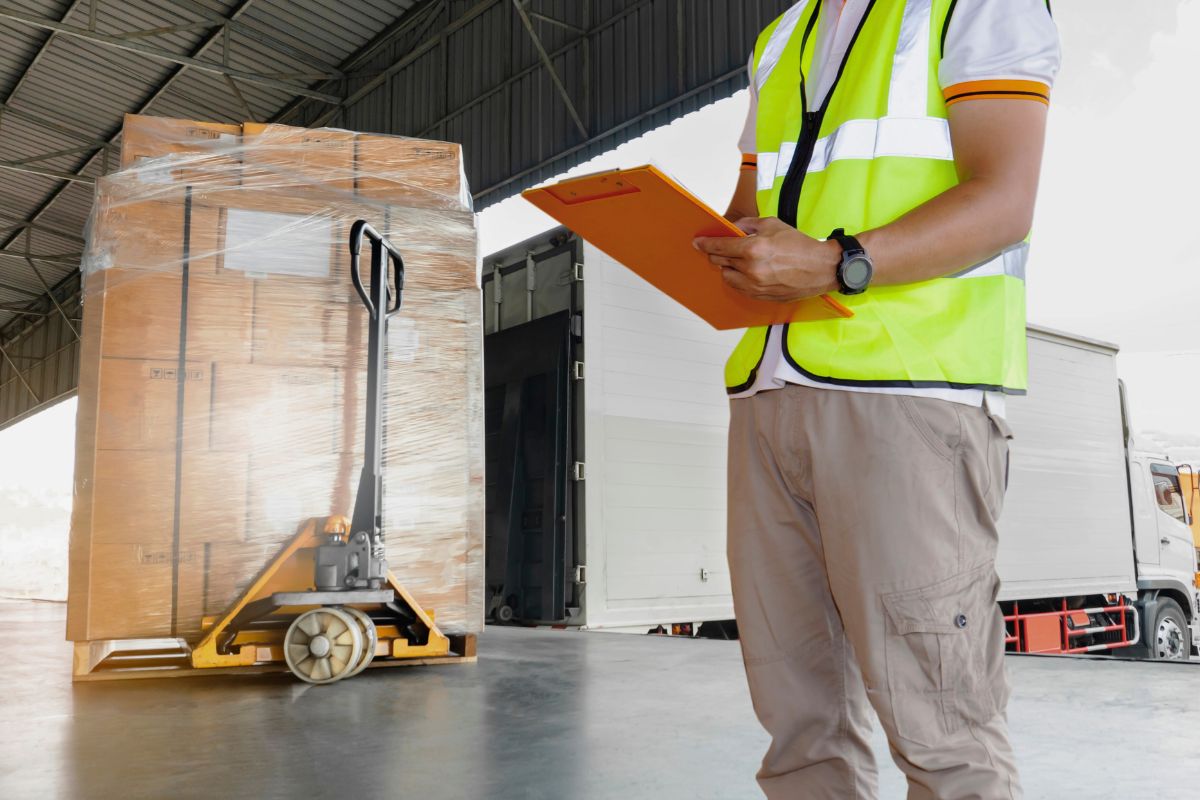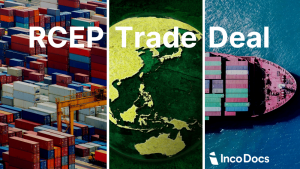NMFC codes are part of the National Motor Freight Classification system. They classify freight based on factors like density, handling, stowability, and value. These codes were created by the National Motor Freight Traffic Association (NMFA). Each type of freight gets its own NMFC code, which helps carriers know how to handle and price each item. This system lets shippers and carriers use the same guidelines.
Using NMFC codes allows shippers to get an accurate cost for each load. The codes show how much space an item needs, any special handling it requires, or if it has a risk of damage. Carriers rely on this information to plan safe and efficient routes and avoid reclassifications. With an NMFC code lookup tool, shippers can easily find the right classification for each item.
NMFC codes are used mainly for LTL (Less-Than-Truckload) shipments. In LTL shipping, multiple shippers share space on a single truck, so each item needs a clear classification. More information on FTL and LTL can be found here.
What is Freight Class?
Freight class is a system that groups different types of freight into 18 freight classes. Each category has a number between 50 and 500. Lower numbers represent items that are dense and easy to transport. Higher numbers are for items that are light, fragile, or need special handling.
The NMFTA, sets these classes. Their system helps everyone in the freight industry follow the same rules.
NMFC Code Lookup Chart
| Class | Description | Examples | Weight Range |
|---|---|---|---|
| 50 | Dense, durable items with minimal handling needs | Bricks, cement, steel rods | 50+ lbs (22.7+ kg) |
| 55 | Heavy but sturdy, easy to stow | Hardwood flooring, rolled textiles | 35–50 lbs (15.9–22.7 kg) |
| 60 | Moderate density, compact items | Car parts, machine parts | 30–35 lbs (13.6–15.9 kg) |
| 65 | Stackable goods, still moderately dense | Bottled beverages, boxed tools | 22.5–30 lbs (10.2–13.6 kg) |
| 70 | Easily handled, moderate weight | Unassembled furniture, canned foods | 15–22.5 lbs (6.8–10.2 kg) |
| 77.5 | Requires some handling care | Tires, bathroom fixtures | 13.5–15 lbs (6.1–6.8 kg) |
| 85 | Large but manageable items | Crated machinery, metal fixtures | 12–13.5 lbs (5.4–6.1 kg) |
| 92.5 | Valuable, heavier goods needing extra care | Refrigerators, tool chests | 10.5–12 lbs (4.8–5.4 kg) |
| 100 | Light items with moderate handling needs | Boat covers, garden equipment | 9–10.5 lbs (4.1–4.8 kg) |
| 110 | Fragile or unique shape | Cabinets, framed art pieces | 8–9 lbs (3.6–4.1 kg) |
| 125 | Lightweight, easy to damage | Small household appliances | 7–8 lbs (3.2–3.6 kg) |
| 150 | Larger but delicate items | Wooden desks, electronic consoles | 6–7 lbs (2.7–3.2 kg) |
| 175 | Lightweight and valuable, often fragile | Upholstered chairs, stuffed furniture | 5–6 lbs (2.3–2.7 kg) |
| 200 | Bulky, moderate value | Packaged mattresses, large plastic crates | 4–5 lbs (1.8–2.3 kg) |
| 250 | Higher value, difficult to stow | Bamboo furniture, audio systems | 3–4 lbs (1.4–1.8 kg) |
| 300 | Low-density but valuable items | Wooden tables, lightweight kayaks | 2–3 lbs (0.9–1.4 kg) |
| 400 | Very light but delicate | Deer antlers, large ornamental pieces | 1–2 lbs (0.45–0.9 kg) |
| 500 | High-value, low-density, easily damaged | Sculptures, high-end electronics | Less than 1 lb (less than 0.45 kg) |
Key Factors Determining Freight Class
Density
The amount of space an item occupies compared to its weight defines its density. Dense and compact items, like bricks or steel rods, fit into lower freight classes. They are easy to store and require minimal space. In contrast, less dense items, like ping pong balls, are lightweight but take up more room. This makes them harder to store efficiently and places them in a higher class.
Handling
Some shipments need special care, and this is what handling requirements are about. Items like electronics or glassware need extra attention to avoid damage and fall into higher classes. Heavy machinery, however, is easier to handle and doesn’t require the same level of care. This places it in a lower class and makes loading simpler. Handling guidelines ensure items are safe throughout transit.
Stowability
How well an item can be packed with other freight is stowability. Items with regular shapes, like boxes of tools or bottled drinks, stack easily and use space well. These belong to lower classes, making them efficient to store. Irregular or hazardous items, like car parts or chemicals, are harder to store with other freight. They often need more room or special placement, putting them in higher classes.
Liability
The risk of loss or damage defines liability for an item. High-value goods like fine art or electronics carry a higher liability. They often need extra protection to prevent theft or damage during transit. In contrast, low-value items, such as paper or textiles, have less risk. Liability impacts shipping rates and insurance, making accurate classification essential for these items.
5. How to Find the Correct NMFC Code
Identifying Your Commodity
Start by identifying your item as specifically as possible. A detailed description will increase your chances of finding the right NMFC code. Avoid using general terms like “furniture” or “appliance.” Instead, use precise labels, like “oak dining table” or “ceramic floor tiles.” Specific details reduce the risk of misclassification.
Consulting the NMFC Database
Use an NMFC code lookup tool to search for the correct code. Tools like ClassIT and other NMFC databases allow you to search by keywords. You can access these databases online to find the most current classifications. Be as exact as possible in your search to get an accurate match.
Calculating Density
If your item’s classification depends on density, you’ll need to calculate it. Start by measuring the item’s height, width, and length. Calculate the volume and then divide the item’s weight by this volume. This number will give you the density, which you can use to identify the right class in the NMFC chart.
Carrier Confirmation
Once you find the NMFC code, confirm it with your carrier. Carriers may have slight differences in how they interpret codes based on routes or handling needs. Confirming with your carrier ensures accuracy, avoids reclassification, and helps you get the right rates for your shipment.
Importance of Using the Correct NMFC Code

Using the correct NMFC code is key to managing shipping costs and avoiding issues. Here’s why it matters.
Impact on Shipping Costs
Freight class affects your shipping rates directly. The NMFC code determines the class of your freight. Lower classes usually cost less to ship because they take up less space or are easier to handle. Higher classes, which may include fragile or bulky items, come with higher costs. Accurate coding keeps your rates fair and avoids overpaying.
Reclassification Risks
Reclassification happens when a carrier finds an NMFC code that doesn’t match the freight. This can lead to extra fees or delays. Common causes include using a vague description or incorrect measurements. When reclassification occurs, you could face unexpected penalties and a higher shipping bill. Using the right code from the start helps avoid these issues.
Insurance and Liability Concerns
The NMFC code also affects your insurance and liability. If the code is incorrect, your freight may not be covered for damage or loss. Accurate coding lets carriers know how to handle each item safely, lowering the risk of damage. This is especially important for high-value items. With the correct NMFC code, you ensure that your freight gets proper care and coverage.
Examples of NMFC Codes and Their Applications
NMFC codes in action helps you see how they impact shipping costs and procedures. Below are two examples: one for a low-class item and another for a high-class item.
Example 1: Shipping Dense Machinery from Chicago to New York (Lower Class)
A small manufacturer in Chicago needs to ship a crate of metal gears to a buyer in New York. These gears are heavy, compact, and durable, making them dense and easy to handle. The correct NMFC code for metal gears is 133300, which falls under Class 50.
Since Class 50 items are dense and sturdy, they are in one of the lowest NMFC classes, making them less costly to ship. To ensure proper classification, the shipper must fill out the Bill of Lading (BOL) with accurate details, including the NMFC code (133300), item description (“crated metal gears”), dimensions, and weight.
The carrier uses this information to assign the correct freight class and calculate the shipping rate. Selecting the correct class for dense items helps the manufacturer avoid unnecessary reclassification fees and ensures proper handling and stowage of the freight.
Example 2: Shipping Framed Artwork from Los Angeles to Miami (Higher Class)
A gallery in Los Angeles is shipping a large, framed painting to a client in Miami. This piece is high-value and fragile, needing special handling and protection. The correct NMFC code for framed artwork is 100240, which places it in Class 300.
Items in Class 300 are lighter, delicate, and high in value, requiring extra handling and sometimes special packaging. On the BOL, the gallery lists the NMFC code (100240), description (“framed painting”), and precise dimensions and weight. For extra protection, they include details on packaging, such as “protected with custom padding and crate.”
Due to its higher class, shipping is more expensive, but proper classification ensures accurate charges and safe delivery of the painting to the client in Miami.
Why Don’t Full Container Load (FCL) Shipments Use NMFC Codes?
Full container loads, or FCL (Full Container Load) shipments, do not rely on NMFC codes. Since FCL shipments fill an entire truck or container with goods from a single shipper, there’s no need for specific codes to separate items by class. The cost and handling are determined for the entire load, which makes NMFC classifications unnecessary. In these cases, the shipper pays a flat rate for the full container.
Are NMFC Codes used in global trade?
NMFC codes are primarily used in the United States for domestic freight shipping. The NMFTA created this system to classify goods shipped within the U.S., making it specific to the U.S. logistics and transportation industry. NMFC codes do not apply to international or global trade directly.
In global trade, other classification systems, such as the Harmonized System (HS) codes, are used to categorize goods for customs and tariffs. HS codes are recognized worldwide and provide a standardized classification system for international shipping, unlike NMFC codes, which are mainly for domestic LTL (Less-Than-Truckload) shipments within the U.S.







